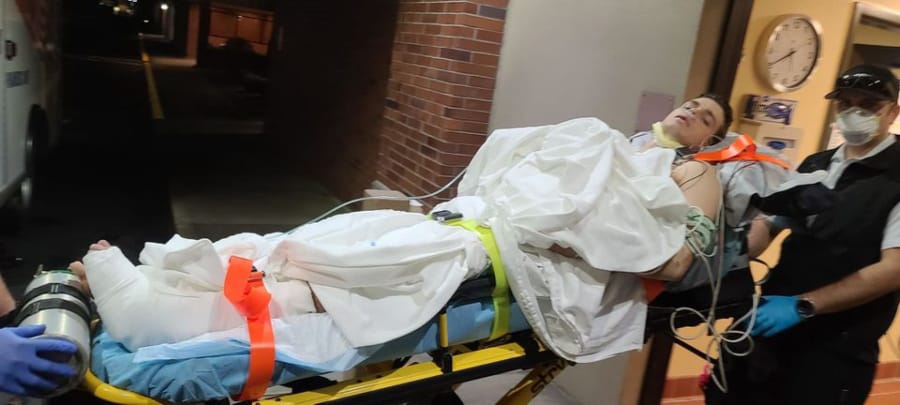Cole Herrington was on his surfboard waiting for the next wave when he was suddenly yanked under the water.
His friends saw the shark as it approached. One of them called out a warning, but it was too late.
The shark sneaked up from behind and latched onto Herrington’s leg and board.
The shark then released him. The next thing Herrington knew, he was back on the surface. He saw blood gushing from his leg. He felt intense, throbbing pain in his foot. He never saw what grabbed him.
But his friends did.
They saw what marine biologists say was likely a great white shark, measuring about 12 feet long. In the seconds before the attack, the shark’s 21/2-foot dorsal fin glided toward Herrington.
“Before I knew it, I got hit really hard,” he said. “The next thing I remember is grabbing my board.”
His first thought: “I didn’t want to die.”
He called out for help and began paddling hard toward the shore.
“I knew something was pretty bad,” he said. “I was just praying that it wasn’t coming back to try to bite me again, which luckily it didn’t.”
Herrington spoke Wednesday from his room at Legacy Emanuel Medical Center, where he is being treated for serious injuries to his leg. He has so far undergone two surgeries. He said he is in a lot of pain but remembers most of what happened on that Sunday afternoon last weekend.
He said the forecast was decent for surfing that day so he headed out alone to a spot south of Seaside known as The Point. It’s a spot popular with local surfers, Herrington said. He ran into a couple of friends at the beach who also planned to surf that day.
He figured he was about a half-mile from shore in waters that were probably about 10 feet deep.
After the attack, his friends helped pull him from the water and bring him to shore. They fashioned a tourniquet from a T-shirt and a stick. One of them called 911 and carried him to the parking lot, where he met medics.
Marine biologists say Herrington probably encountered a white shark given the location and nature of the attack.
Taylor Chapple, an authority on sharks and a professor at Oregon State University, said sharks are “incredibly discerning predators.”
“They are quite adept at knowing what their target prey is, which is why this type of interaction is incredibly rare,” he said in an email to The Oregonian/OregonLive. “This type of interaction is often a case of mistaken identity.”
He said sharks’ gums and mouths are sensitive. “This shark likely realized that the surfer and board were not its natural target after the initial interaction,” he wrote.
Herrington said he’s grateful for the support he’s received since the attack. He said he’s still in shock.
“It’s still weird to me right now,” he said. “It just keeps playing back in my head. It’s hard to take in.”
He said he hopes to begin physical therapy as soon as possible. He’s eager to get back to the beach.
Herrington recently moved from Seaside to Beaverton and is training to be an electrician.
“I am not going to let it affect me,” he said. “Surfing is my passion. I want to do that until I leave this earth. I will be right back in the water once I heal up.”




